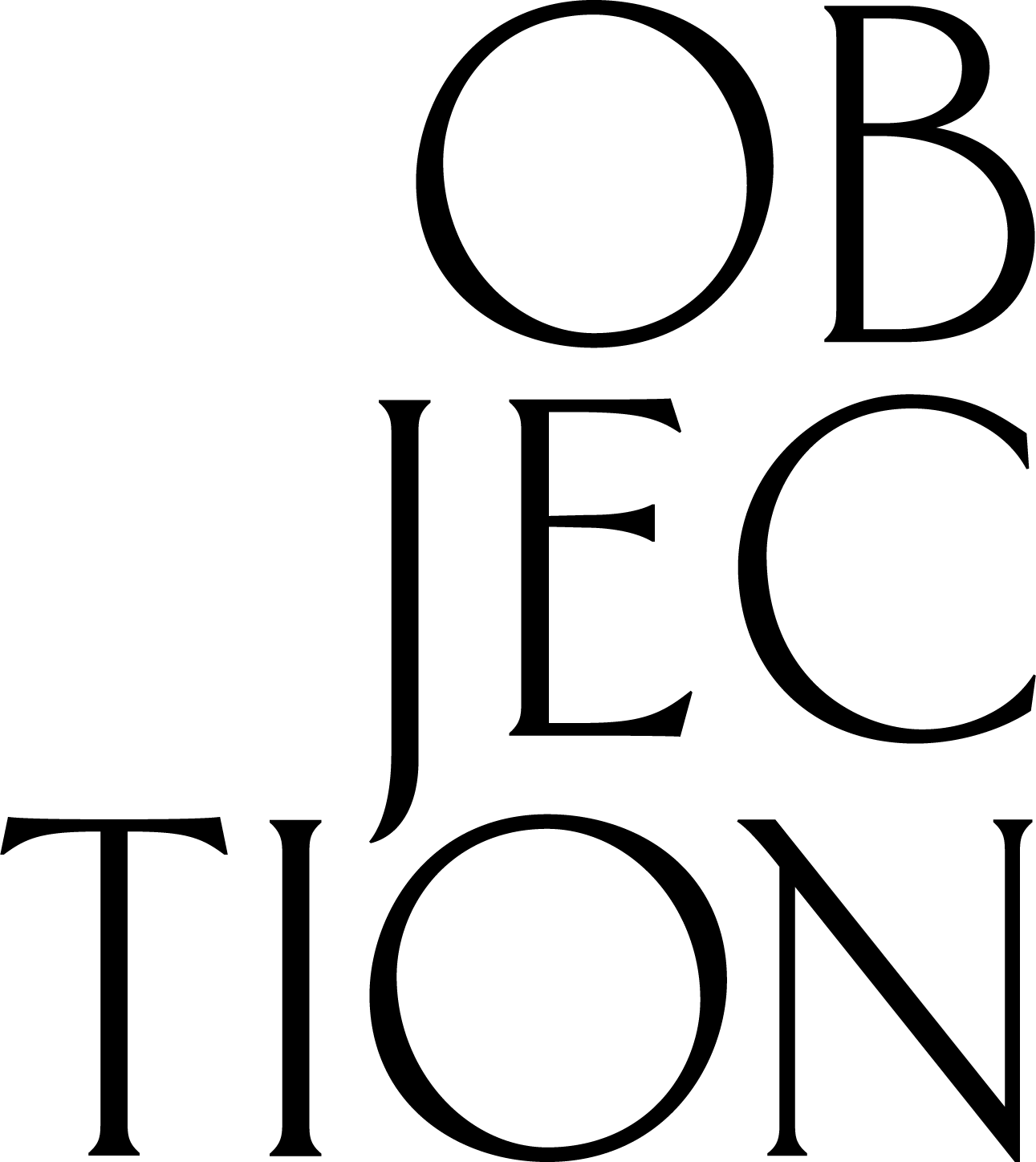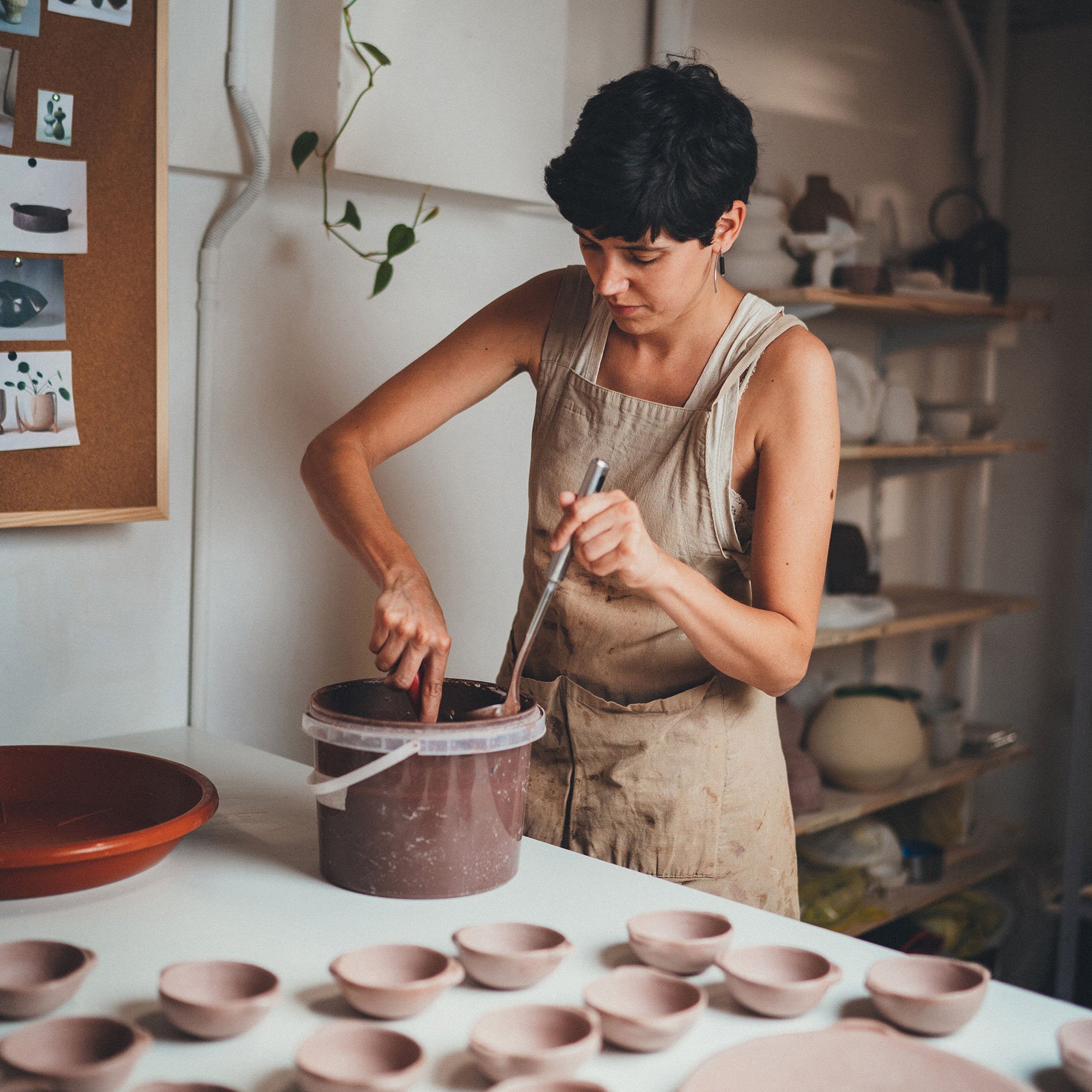Lisa Allegra
Lisa Allegra is a free spirited artist with a very French couture sensibility.
She creates tableware for Sessùn and exports her delicate ceramics internationally through the prestigious Philia Gallery, Chiara Colombini and The Webster in the United States. Conversation under the Barcelona sun.
Words by Katia Kulawick-Assante
TELL US ABOUT YOUR JOURNEY?
I studied at the "Art Décos" school in Strasbourg. It is a school very open to know-how but in an artistic way, with workshops in ceramics, bookbinding, metalwork, that forged my way of approaching design. I really like working with the material. I did internships at Tsé Tsé Associées and Constance Guisset, always working a lot on this subject. Then I wanted to get started. But finding editors is complicated. I won a competition via Intramuros magazine with a furniture editor, but realised then that the designer doesn't earn more than 2-5% on the final price of the object. I told myself it was going to be complicated. I travelled around the world for a while and when I came back I wanted to work as a team. I met Alexandre Roussard at Diptyque who entrusted me with the responsibility of the brand's window displays. A very educational challenge, a big budget, very ambitious projects with craftsmen, a super stimulating job but a lot of practical constraints. I chose to put creation at the center of my work and wanted to work independently.
Ceramic is the material I have worked the most during my studies and I have a lot of friends who works with it. This is the material that suits me best. After my Diptyque adventure and a baby, my husband and I wanted to reinvent ourselves and we left Paris to live in Barcelona, a bit randomly, in 2017. I started in a shared workshop, then in March 2021, I opened my own studio, in the district of Gracia which I adore. Here I can make pieces on a larger scale with more collaborators
“This choice to work differently, focusing on quality more than quantity is important to me.”
Lisa Allegra
Ark Stool. Photographed by Hebdomania
WHAT DO YOU LIKE ABOUT CERAMICS?
It’s a childish material, in the sense that anyone can do ceramics. That’s why it’s so popular right now. It is democratic and its easy aspect - at first glance - pleases me. But making ceramics does not mean knowing what to do with ceramics. We can make stretched or soft shapes out of them, we can work small objects and there are also clay houses! Ceramic is fascinating because it is a material that we never fully know, it always contains an element of surprise.
WHAT ARE THE CHALLENGES OF CREATING CERAMIC FURNITURE?
One of my latest projects is a floor lamp. The limit of ceramic creation is necessarily the size of the kiln, even if you can still do some assembly. I always try to find bigger kiln, or to work with clay to free myself from firing. With ceramics, you learn all the time. I discovered clay architecture thanks to a children's house project that a friend architect (Justine Girard) had realized for « la chaine de l’espoir » in Senegal. She proposed me to realize the interior architecture. I would love to continue to explore and participate in clay architecture projects.
HAVE THE LOCKDOWNS CHANGED YOUR APPROACH TO CERAMICS?
The first lock down was a moment of grace. I felt like the world had stopped and there was a lot of discussion. People started talking and were no longer rushing to order. Galleries would call me and say, we're not buying anything right now, but how could we work together?
Kyrtos Light. Photographed by Hebdomania
Ark Stool. Photographed by Hebdomania
WHAT IS YOUR RELATIONSHIP TO TIME IN YOUR WORK?
Going independent, I was happy to earn less but work as wish. Even if it means saying no to projects. It is not always easy. This choice to work differently, focusing on quality more than quantity is important to me. In a classic business model, you have to grow every year, always do more. This is not my role model. I constantly wonder what my goal was to begin with and see how to stay focused on creating. I have interns, I work with people I can trust, who have know-how. The other aspect is not to neglect all the life that there is around work, even if it is a passion. It's not about creating at all costs.
HAS BARCELONA INFLUENCED YOUR WORK?
I found another way of thinking about time in Barcelona. And also the weather is better. Here, they don't have the same way of working and living, it's much slower. For the Parisian that I am, it can be painful sometimes, but I see what a quality of life it is. Even if the city is in turmoil, we are surrounded by the sea and the mountain, and the temporality of nature is closer. This is what I wanted to achieve, something more calming.
Moor Collection. Photographed by Hebdomania
WHAT WOULD BE THE SPECIFICITY OF YOUR WORK?
I like working on balance and proportion, finding the right finesse of a foot, accommodating it with a larger seat, I like the surprise in the object, the bi-material, and working with more precision on larger scale pieces. I like working with different ceramic techniques, apart from modeling, for example I made vases in my Apparel collection using the Slab building technique - they look like leather - . I also like the relationship with fashion, which I follow a lot. I sew the ceramic like a garment, creating a movement. I find what Jacquemus does to be very inspiring and uncompromising, both in creation and as a business model.
WHAT ARE YOUR PROJECTS?
I'm working on collaborations with interior architects for the end of the year. I want to focus on details: work on my large pieces of furniture, develop my collections and work on a more assertive identity. I want to build over time ...
https://lisaallegra.fr/
https://www.instagram.com/_lisaallegra_/





